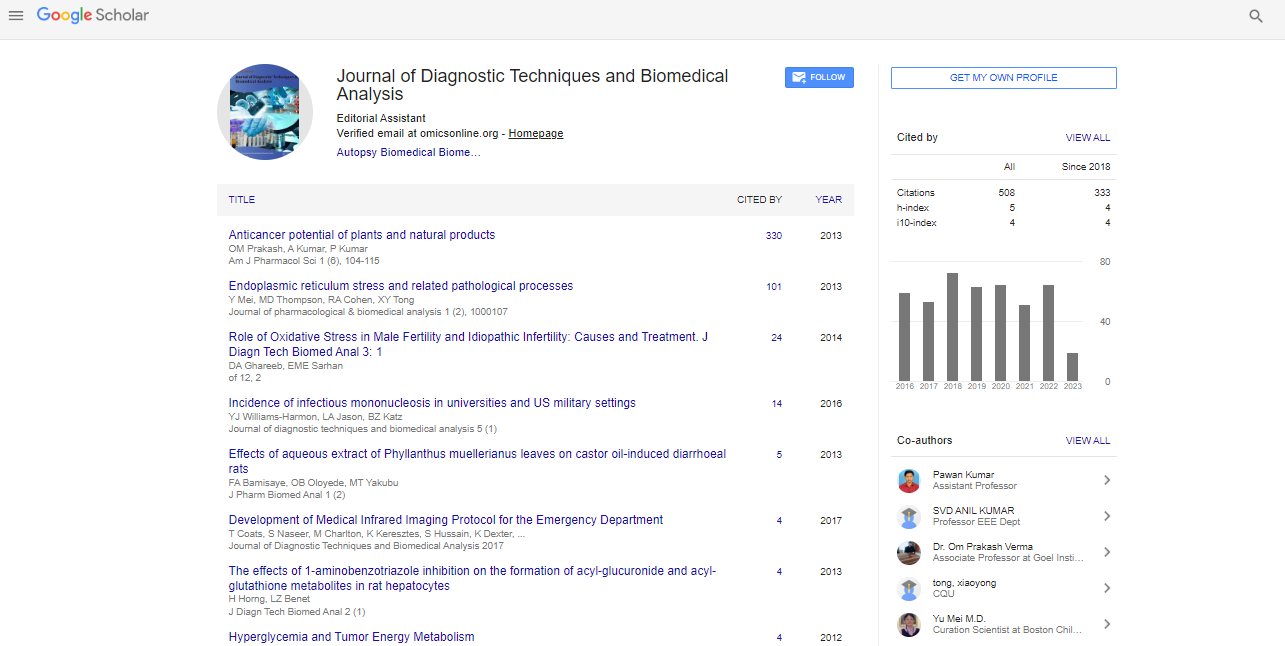Editorial, J Pharmacol Biomed Anal Vol: 1 Issue: 1
The Sterol Regulatory Element Binding Transcription Factor 1 (SREBP1): An Attractive Therapeutic Target in CNS Drug Discoveries
| Changiz Taghibiglou* |
| Department of Pharmacology, College of Medicine, University of Saskatchewan, Canada |
| Corresponding author : Changiz Taghibiglou Department of Pharmacology, College of Medicine, University of Saskatchewan, Saskatchewan, Canada Tel: 306-966-8816; Fax: 306-966-6220 E-mail: changiz.taghibiglou@usask.ca |
| Received: April 05, 2013 Accepted: May 15, 2013 Published: May 20, 2013 doi:10.4172/2327-4638.1000e102 |
Abstract
The Sterol Regulatory Element Binding Transcription Factor 1 (SREBP1): An Attractive Therapeutic Target in CNS Drug Discoveries
Sterol regulatory element binding proteins (SREBPs) are endoplasmic reticulum (ER) residing transcription factors best known for their roles in regulation of genes mostly involved in the lipid biogenesis and metabolism in the liver and adipose tissues. This family of lipid transcription factors consists of SREBP1a, SREBP1c, and SREBP2.
Keywords: Sterol Regulatory Element ; Endoplasmic reticulum; Transcription factors; Genes; Drugs
| Sterol regulatory element binding proteins (SREBPs) are endoplasmic reticulum (ER) residing transcription factors best known for their roles in regulation of genes mostly involved in the lipid biogenesis and metabolism in the liver and adipose tissues. This family of lipid transcription factors consists of SREBP1a, SREBP1c, and SREBP2 [1,2]. Activation of SREBPs require cleavage of the inactive ER membrane integral precursor protein (immature form) by two dedicated proteases in the Golgi apparatus, leading to the release and nuclear translocation of the soluble mature N-terminal SREBP (nt-SREBP) for transcriptional activity. SREBP-1 regulates genes mainly involved in fatty acid biogenesis as well as cholesterol biosynthesis, whereas SREBP-2 is a major regulator of cholesterol biogenesis. SREBP-1 activation has recently been linked to glucolipotoxic cell death in pancreatic beta cells [3], and activation of SREBP-1 has also been found in response to anaerobic [4], hypoxic [5], ER stress [6] and oxidative stress [7]. | |
| Overactivation of excitatory glutamate receptors (excitotoxicity), particularly N-methyl-d-aspartate glutamate receptors (NMDARs), have been implicated in pathogenesis of a wide variety of neurological and neurodegenerative diseases such as stroke, traumatic brain injury, epilepsy, schizophrenia, ALS, and Alzheimer’s, Parkinson’s, and Huntington’s diseases [8]. Among NMDARs, overactivation of those containing GluN2B subunits has been linked to excitotoxicityrelated neuronal apoptosis. Unfortunately, almost all of NMDAR inhibitors failed in different stages of drug development research due to their severe neurological side effects. Therefore, novel therapeutic targets downstream of NMDAR (Glun2B subunit) may provide better and safer pharmacological agents to treat excitotoxicity-related CNS diseases. Excitotoxicity also changes neuronal cholesterol synthesis and transport pathways [9]. Moreover, it has been demonstrated that excitotoxicity causes a significant loss of plasma membrane cholesterol content [10], which can trigger the activation of neuronal SREBPs. Interestingly, a novel signaling pathway has been recently discovered connecting the overactivation of GluN2B subunits of NMDARs to the activation of SREBP1 and neuronal death [11]. The involvement of GluN2B-SREBP1 deleterious signaling pathway in pathogenesis of stroke and ALS has been demonstrated [11,12]. It is therefore plausible that disruption of this signaling pathway or inhibition of NMDARdependent activation of SREBP1 would be neuroprotective. Indeed, “Indip” (Insig-1-derived interference Peptide) a short cell penetration bioactive peptide was proven to be efficiently neuroprotective by blocking GluN2B-dependent activation of SREBP1 in both in vitro and in vivo models of stroke and ALS [11,12]. Although more studies are needed to investigate the therapeutic effects of Indip in other neurological and neurodegenerative diseases, short peptides like Indip or small molecules, such as botulin [13], fatostatin [14] or its derivatives [15], may provide new pharmacological tools against excitotoxicity-dependent CNS diseases. | |
References |
|
|

